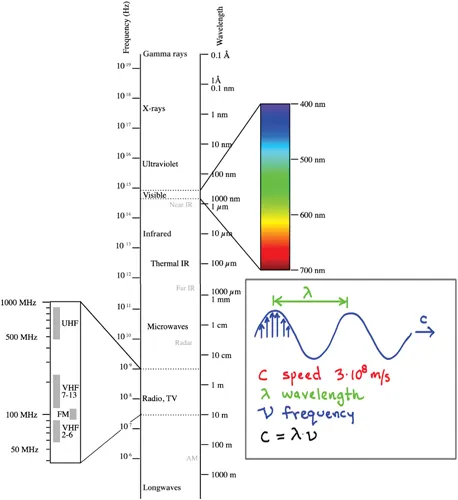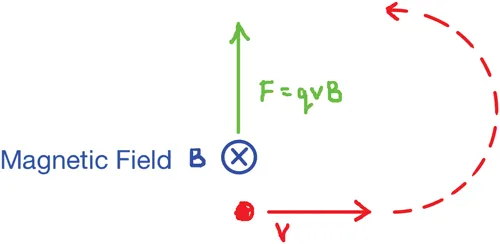
eBook - ePub
Primer on Radiation Oncology Physics
Video Tutorials with Textbook and Problems
Eric Ford
This is a test
Condividi libro
- 356 pagine
- English
- ePUB (disponibile sull'app)
- Disponibile su iOS e Android
eBook - ePub
Primer on Radiation Oncology Physics
Video Tutorials with Textbook and Problems
Eric Ford
Dettagli del libro
Anteprima del libro
Indice dei contenuti
Citazioni
Informazioni sul libro
Gain mastery over the fundamentals of radiation oncology physics! This package gives you over 60 tutorial videos (each 15-20 minutes in length) with a companion text, providing the most complete and effective introduction available. Dr. Ford has tested this approach in formal instruction for years with outstanding results. The text includes extensive problem sets for each chapter. The videos include embedded quizzes and "whiteboard" screen technology to facilitate comprehension. Together, this provides a valuable learning tool both for training purposes and as a refresher for those in practice.
Key Features
- A complete learning package for radiation oncology physics, including a full series of video tutorials with an associated textbook companion website
- Clearly drawn, simple illustrations throughout the videos and text
- Embedded quiz feature in the video tutorials for testing comprehension while viewing
- Each chapter includes problem sets (solutions available to educators)
Domande frequenti
Come faccio ad annullare l'abbonamento?
È semplicissimo: basta accedere alla sezione Account nelle Impostazioni e cliccare su "Annulla abbonamento". Dopo la cancellazione, l'abbonamento rimarrà attivo per il periodo rimanente già pagato. Per maggiori informazioni, clicca qui
È possibile scaricare libri? Se sì, come?
Al momento è possibile scaricare tramite l'app tutti i nostri libri ePub mobile-friendly. Anche la maggior parte dei nostri PDF è scaricabile e stiamo lavorando per rendere disponibile quanto prima il download di tutti gli altri file. Per maggiori informazioni, clicca qui
Che differenza c'è tra i piani?
Entrambi i piani ti danno accesso illimitato alla libreria e a tutte le funzionalità di Perlego. Le uniche differenze sono il prezzo e il periodo di abbonamento: con il piano annuale risparmierai circa il 30% rispetto a 12 rate con quello mensile.
Cos'è Perlego?
Perlego è un servizio di abbonamento a testi accademici, che ti permette di accedere a un'intera libreria online a un prezzo inferiore rispetto a quello che pagheresti per acquistare un singolo libro al mese. Con oltre 1 milione di testi suddivisi in più di 1.000 categorie, troverai sicuramente ciò che fa per te! Per maggiori informazioni, clicca qui.
Perlego supporta la sintesi vocale?
Cerca l'icona Sintesi vocale nel prossimo libro che leggerai per verificare se è possibile riprodurre l'audio. Questo strumento permette di leggere il testo a voce alta, evidenziandolo man mano che la lettura procede. Puoi aumentare o diminuire la velocità della sintesi vocale, oppure sospendere la riproduzione. Per maggiori informazioni, clicca qui.
Primer on Radiation Oncology Physics è disponibile online in formato PDF/ePub?
Sì, puoi accedere a Primer on Radiation Oncology Physics di Eric Ford in formato PDF e/o ePub, così come ad altri libri molto apprezzati nelle sezioni relative a Medicine e Oncology. Scopri oltre 1 milione di libri disponibili nel nostro catalogo.
1
Basic Physics
1.1 Waves and Particles
1.1.1 Electromagnetic Waves
Electromagnetic waves come in many forms, e.g. radio waves, lights, and X-rays. In 1870, James Clerk Maxwell developed a formalism to describe these electromagnetic waves in which the changing magnetic field creates an electric field and vice versa to form a self-sustaining wave that propagates at a speed given the symbol c, the speed of light, which is 3·108 m/s in a vacuum. Three properties describe waves: the speed, c, wavelength, λ, and frequency, ν (sometimes written as f ). See Figure 1.1.1. These are related by

Properties of electromagnetic waves.
| (1.1) |
The units are c (m/s), λ (m), and frequency, ν (1/s given the special unit Hertz, Hz). The type of wave is determined by the wavelength (or equivalently the frequency), see Figure 1.1.1. Note that optical light occupies a relatively narrow range of the spectrum from 400 to 700 nanometers (nm).
At very short wavelengths electromagnetic waves are X-rays. X-rays were first produced and characterized by Wilhelm Roentgen in 1895. They have a wavelength similar to the size of the atom itself. It is more common to describe these waves by their energy instead of their wavelength. The energy, E, is given by
| (1.2) |
Here h is Planck’s constant, a fundamental constant of nature whose value is 6.626·10−34 m2 kg/s. A common unit for energy useful for medical physics applications is the electron-volt, eV, which is the energy gained by one electron moving through a potential of one volt. X-rays and particles in medical physics applications often have energies in keV to MeV range.
1.1.2 Particles
The various particles of importance for medical physics applications are shown in Table 1.1 The electron was first discovered by J.J. Thompson in 1897. Somewhat later, in 1908, Robert A. Millikan and Harvey Fletcher performed a series of experiments which showed that the charge of the electron is quantized, i.e. is present discrete amounts. These experiments involved suspending oil drops in an electric field (see the video for further background). The charge of the electron, we now know, is 1.602·10−19 Coulombs (C).
Another important property of particles is their electric charge. One way to measure this is to measure the charge-to-mass ratio. Then, if the mass is known, the charge is known. The charge-to-mass ratio can be found by measuring the movement of a particle through a magnetic field. Any charged particle moving in a magnetic field experiences a force perpendicular to its motion (Figure 1.1.2) given by F = qvB, where q is the charge, v is the speed, and B is the magnetic field. This force bends the particle into a curved trajectory. The force on a charged particle moving in a magnetic field will have various practical applications in medical physics and forms a key concept.

Force on a moving charged particle in a magnetic field, B.
Table 1.1 shows the masses of the various particles. Note that because of Albert Einstein’s energy–mass equivalence, E = mc2, the rest mass of a particle can be written either as a mass (e.g. kg) or as an energy (e.g. MeV). Note that the mass of a proton is nearly 2000 times that of an electron, a fact that will have many implications for radiation therapy physics.
TABLE 1.1
Fundamental Particles of Importance in the Radiation Therapy Context
Fundamental Particles of Importance in the Radiation Therapy Context
Particle | Symbol | Charge | Rest Mass Energy (E = mc2) |
Electron | e− | − | 0.511 MeV |
Positron (antipar... |